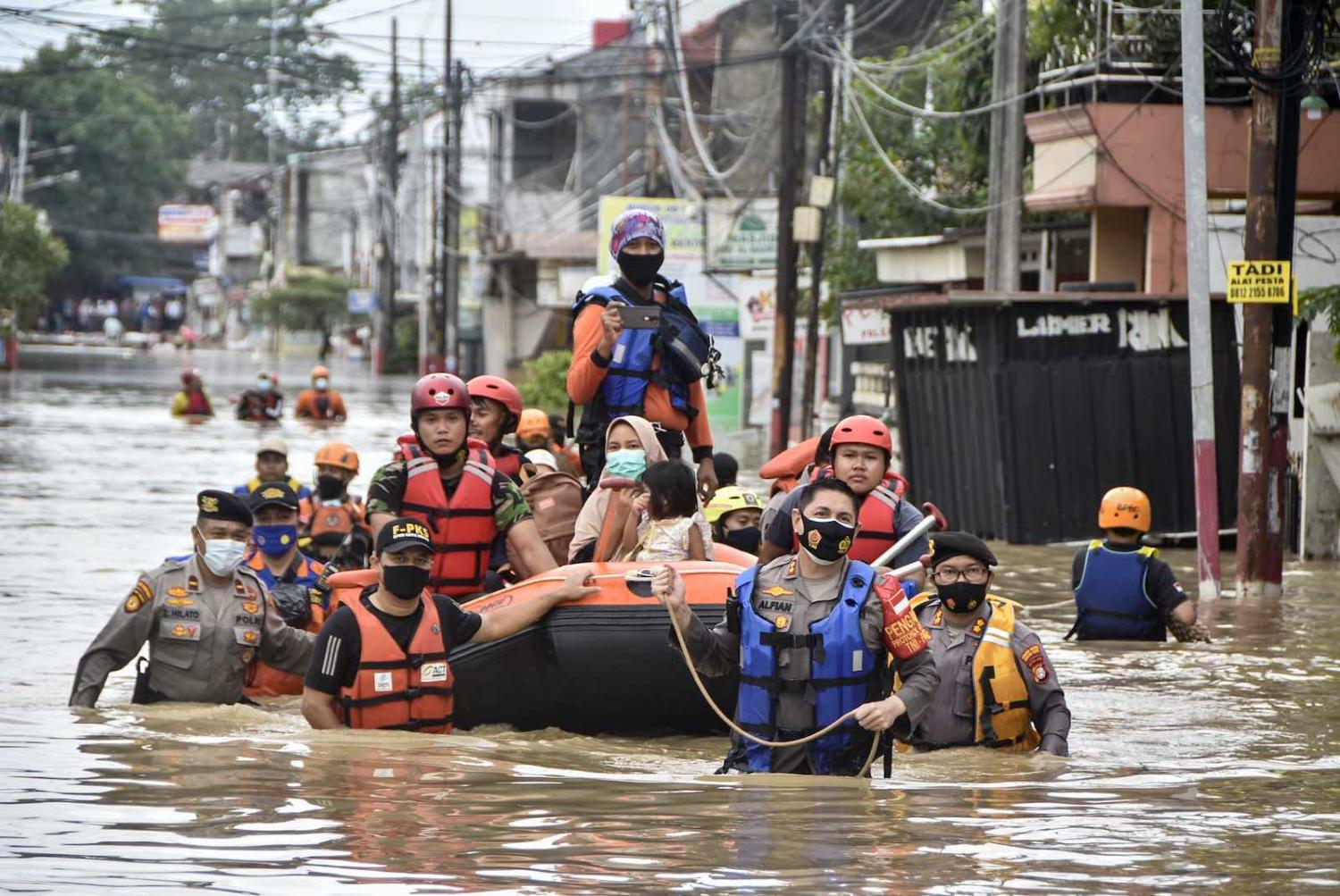There is a consensus among Southeast Asian governments on the need for multi-hazard disaster governance approaches. It is reflected in ASEAN member states’ efforts to strengthen their collective capacity to tackle the growing interconnection of risks and the cascading impacts and transboundary effects of disasters, as demonstrated in the declaration on “One ASEAN, One Response” and the 2021–25 ASEAN Agreement on Disaster Management and Emergency Response (AADMER) Work Programme.
But the Covid-19 pandemic has revealed that disaster governance in Southeast Asia has a narrow focus on natural hazards – perhaps not surprising, given that many vulnerable communities in one of the most disaster-prone regions in the world are highly exposed to drought, earthquakes, floods, typhoons and more.
However, the disaster-risk environment is transforming, and disaster governance systems need to evolve in an increasingly complex and interconnected world. Take the Covid-19 pandemic, for example. How can disaster governance frameworks, arrangements and mechanisms be reoriented, repurposed and revamped to increase the effectiveness of future pandemic preparedness and response in the region?
As a first step, Southeast Asian governments need to facilitate the increased alignment of three agendas and their intersecting challenges:
- biological hazards in disaster governance
- infectious diseases in public health
- biosecurity in national security
Pandemics can increase disaster vulnerability, undermine the welfare of society and threaten the stability of states. However, differences in terminology and countermeasures between these domains can often result in competing objectives and resource inefficiencies that limit preparedness and slow down response.
Nationwide efforts to improve health-risk mitigation, emergency preparedness, multi-sectoral responses and healthcare recovery will not be sustainable until structures for co-creating solutions among various stakeholders are established and functioning. The health emergency and disaster-risk management framework issued by the World Health Organisation in 2019 proposes common terms and comprehensive methods that, when implemented, can facilitate inter-domain cooperation.
Disaster-risk management–based frameworks are adaptable because they usually apply to a diverse range of hazards. Reorienting them and incorporating epidemiological forecasts and biosecurity threat assessments in disaster-risk mapping can help identify the most vulnerable communities to target. Integrating alerts for emerging diseases and health emergencies into early warning systems for natural hazards can augment health surveillance and outbreak detection.
Local disaster governance networks that allow community-oriented approaches and multi-stakeholder cooperation to flourish created unique pathways for dealing with Covid-19.
ASEAN member states also need to support the increased adoption of systemic thinking and broaden their understanding of the links between various risks. This will help generate more ideas for repurposing arrangements so that the three domains complement one another to enhance the resilience, health and security of the citizens they serve.
Ensuring that risk-reduction planning covers biological hazards can minimise healthcare delivery challenges after disasters, such as shortages of medical personnel and supplies. Refining disaster-management functions in the public-health domain can boost emergency coordination between healthcare providers. Opening up to other viewpoints and methods can help bring more diversity and inclusion typically lacking in the national security domain, which is often dominated by defence and security forces.
For instance, the pre-positioning of ASEAN Disaster Emergency Logistic System (DELSA) stockpiles can include medical supplies and protective equipment for pandemic response. DELSA partners such as local suppliers, transport services, global logistics experts and medical relief organizations can offer alternative solutions to public health officials preparing for supply-chain disruptions during pandemics. One of the DELSA satellite warehouses is also inside a military headquarters – this can pave the way for engaging defence and security officials in humanitarian logistics exercises involving biological hazards and biosecurity challenges.

Finally, Southeast Asian communities need to assist in revamping disaster governance mechanisms and tools designed to reduce widespread losses in lives, health and livelihoods to supplement Covid-19 response and recovery.
The conventional use of disaster-governance mechanisms involves reallocating state emergency funds, leveraging disaster financing instruments and supporting coordination and logistics on the ground.
But local disaster governance networks that allow community-oriented approaches and multi-stakeholder cooperation to flourish created unique pathways for dealing with Covid-19. These networks, for example, facilitate the use of risk communication and community engagement (RCCE) tools.
RCCEs are communication channels operating in native languages to raise awareness, correct inaccurate information, gather socio-behavioral insights and promote local action. These tools offer a platform for quelling fear and stigma, enhancing community feedback and promoting solidarity, all of which contribute to building trust with communities and developing evidence-based interventions which are essential to tackling the spread of pandemics.
Similarly, pre-existing disaster-risk management partnerships enable civil society, businesses and academia to work together and narrow the gaps in the early stages of pandemic response through crowdsourcing and even sheltering the homeless during lockdowns.
Disaster governance networks in the Asia-Pacific usually have more social connections and more varied interactions because they tend to be more diverse and inclusive than those operating in public-health and national-security domains.
Such disaster governance mechanisms and tools that enhance policy coherence and increase participation in local Covid-19 responses should receive more attention and support. Maximising the use of disaster governance systems that are already available can help the region overcome the challenges of today and in years to come.

